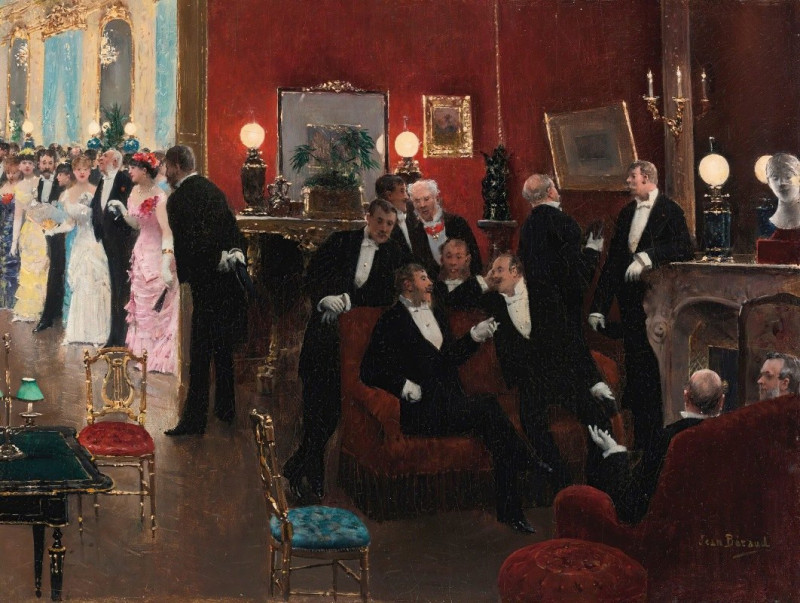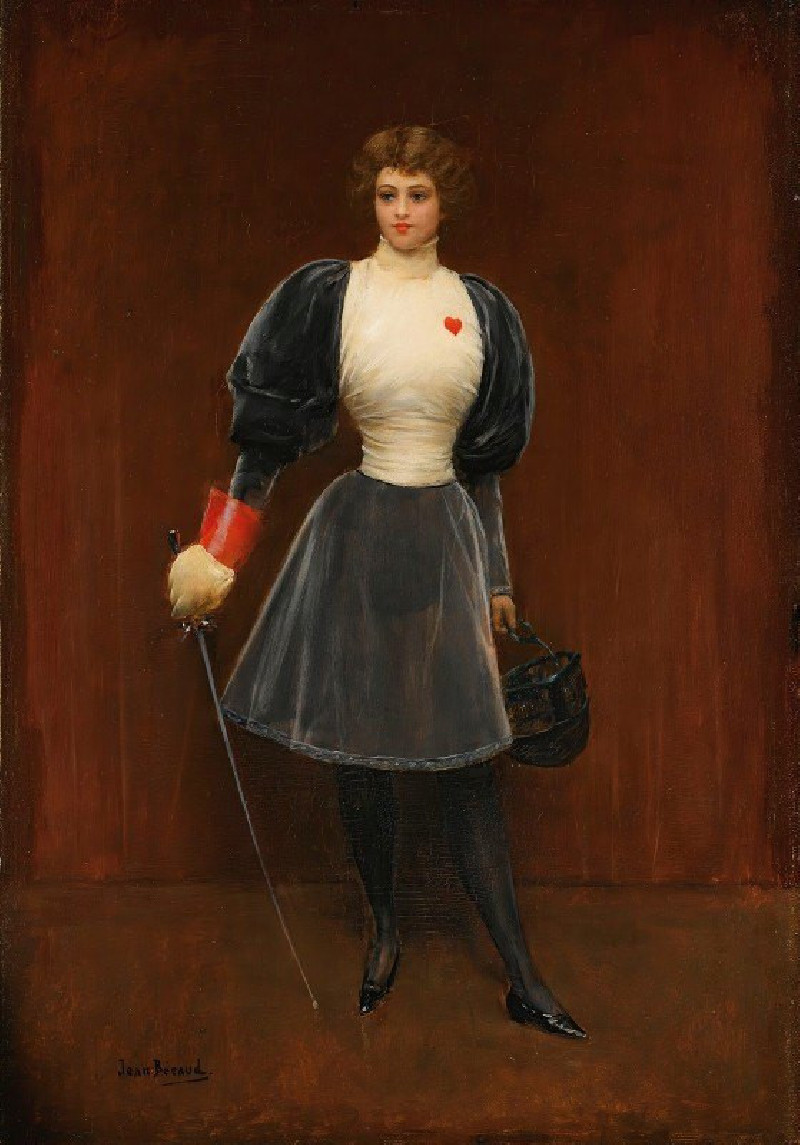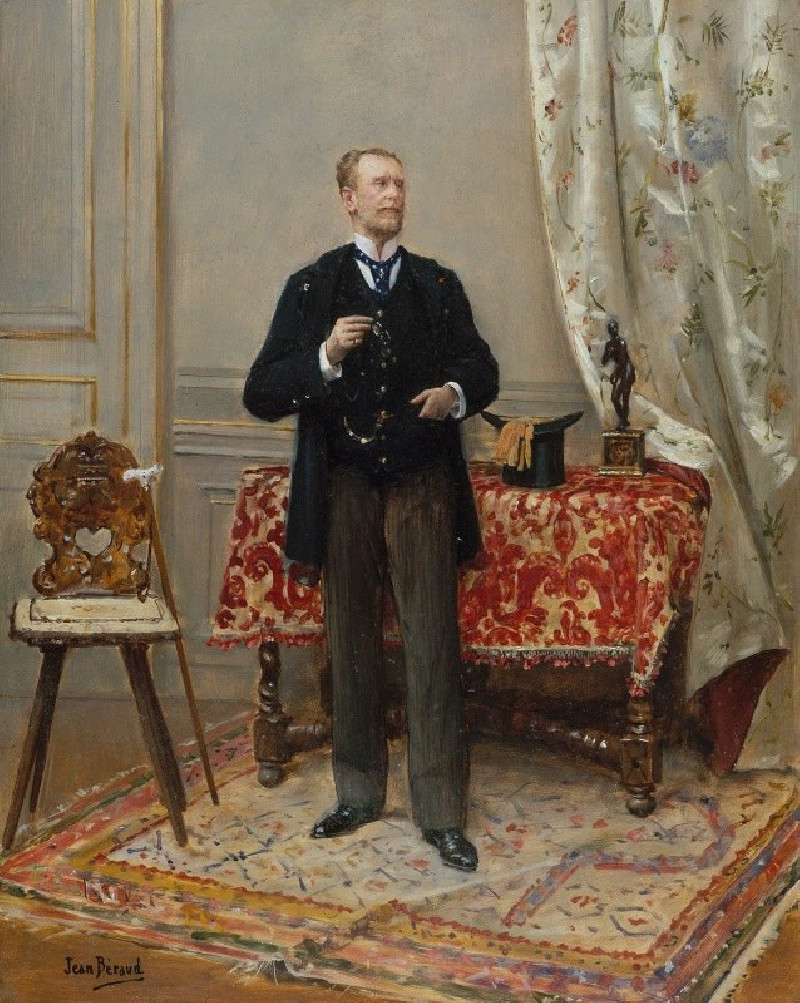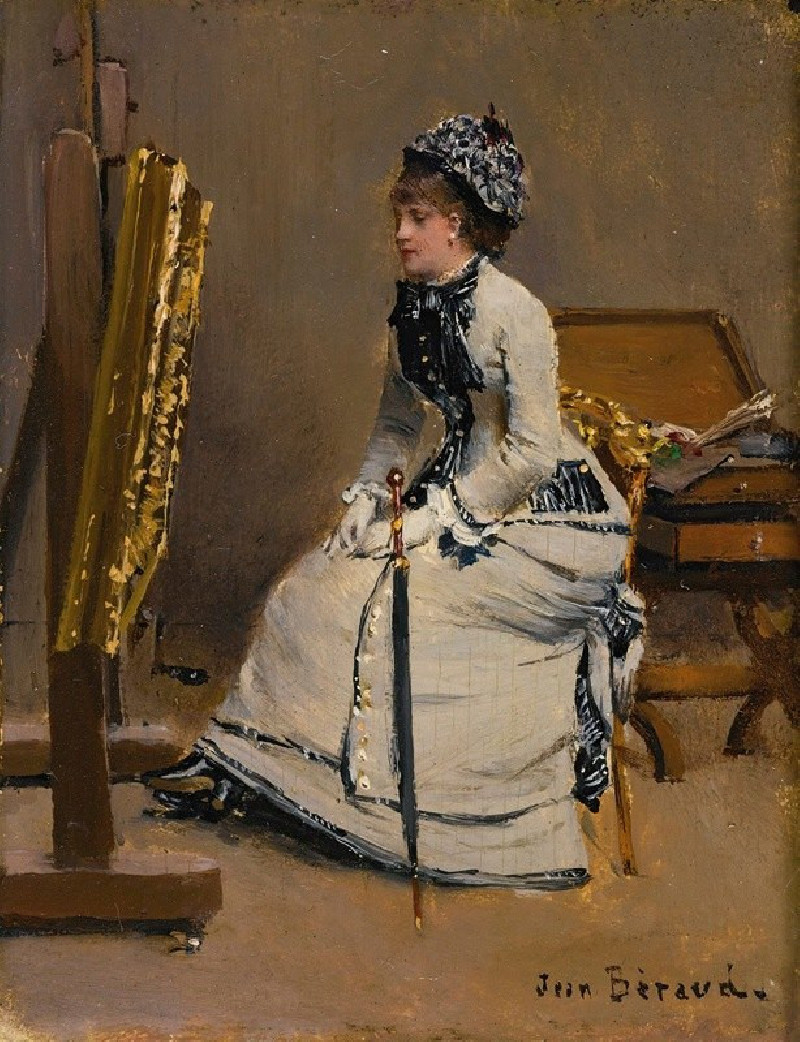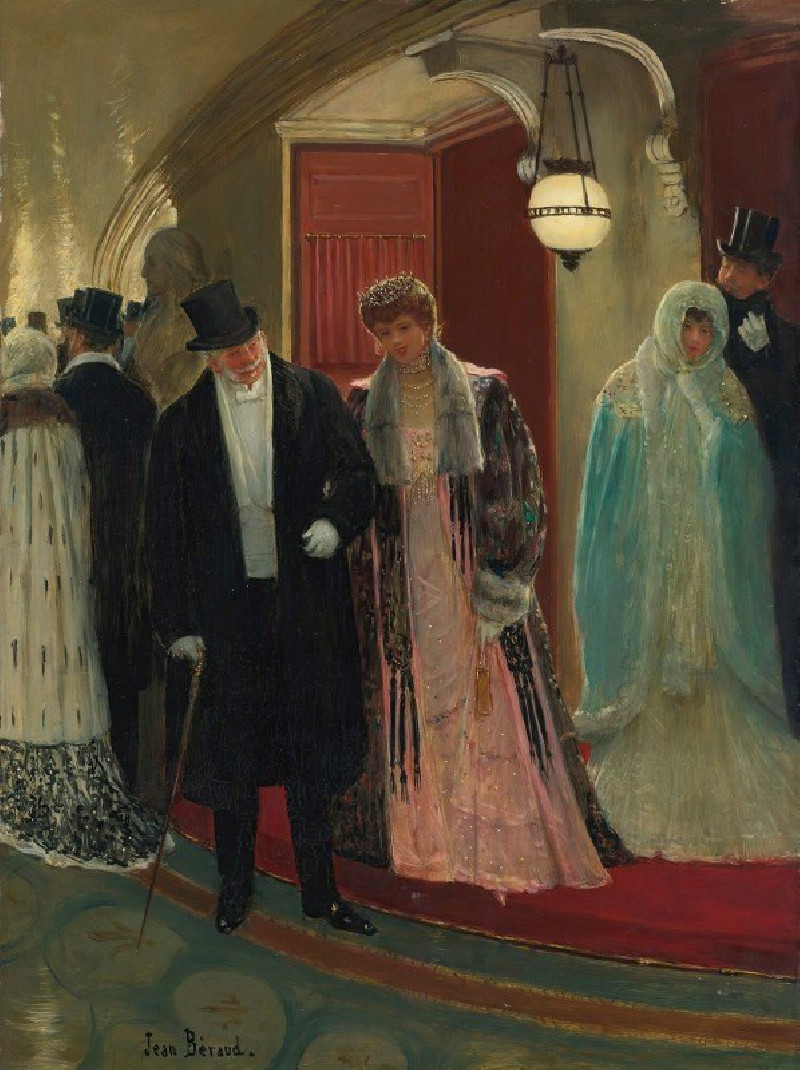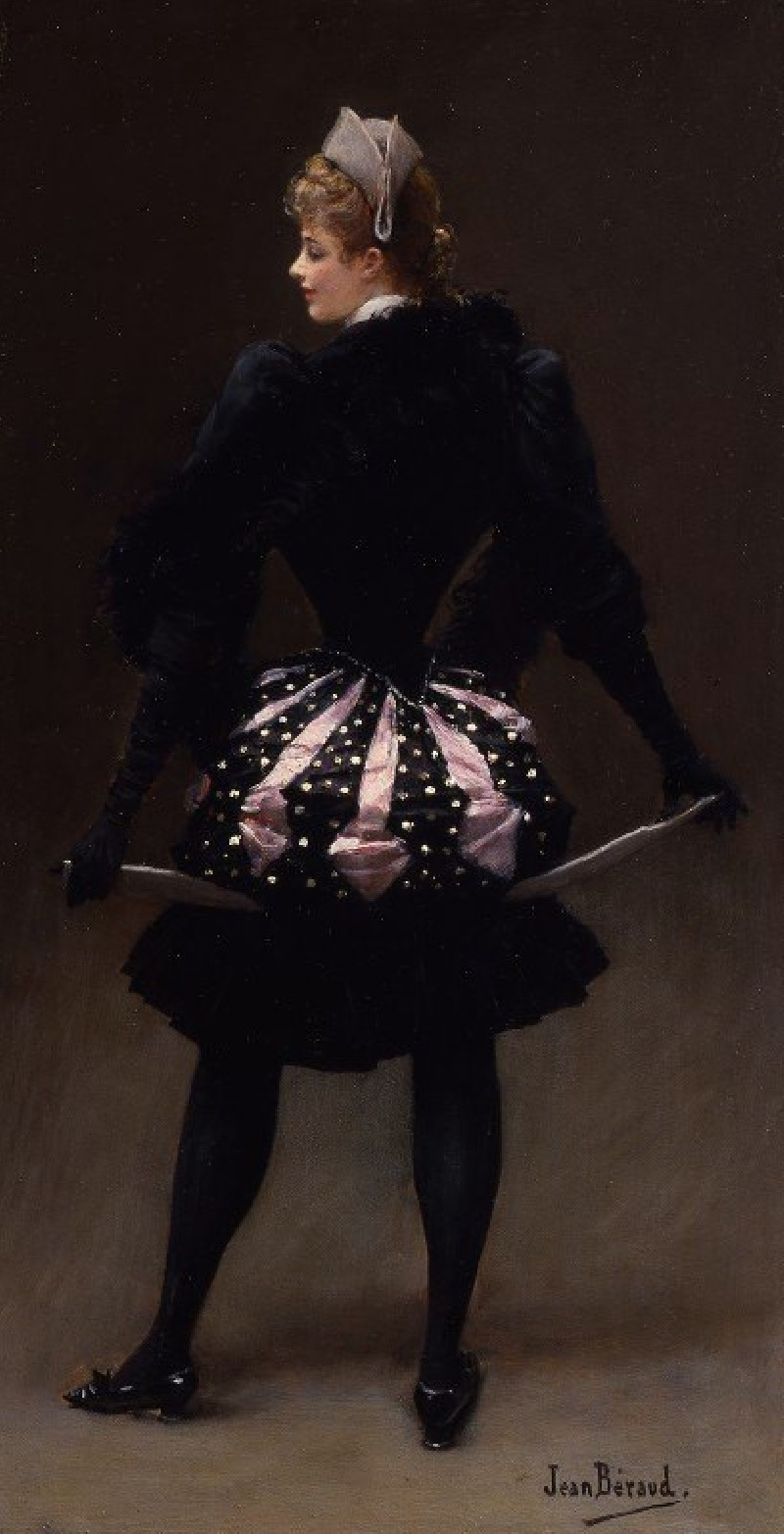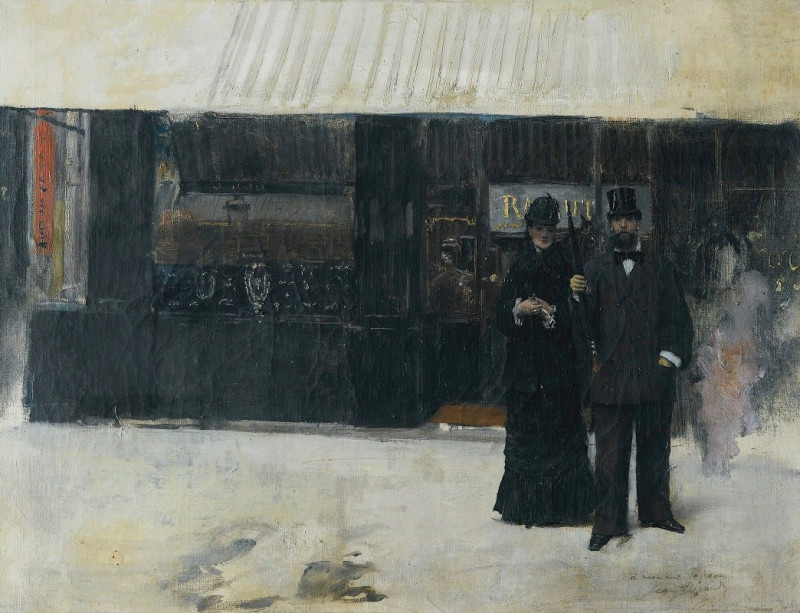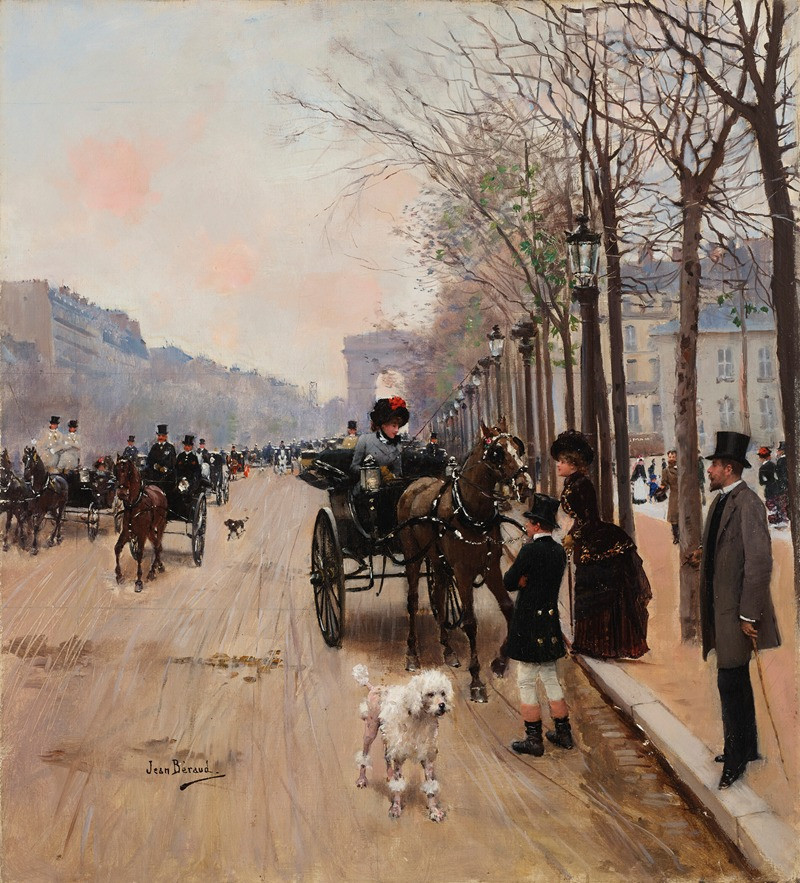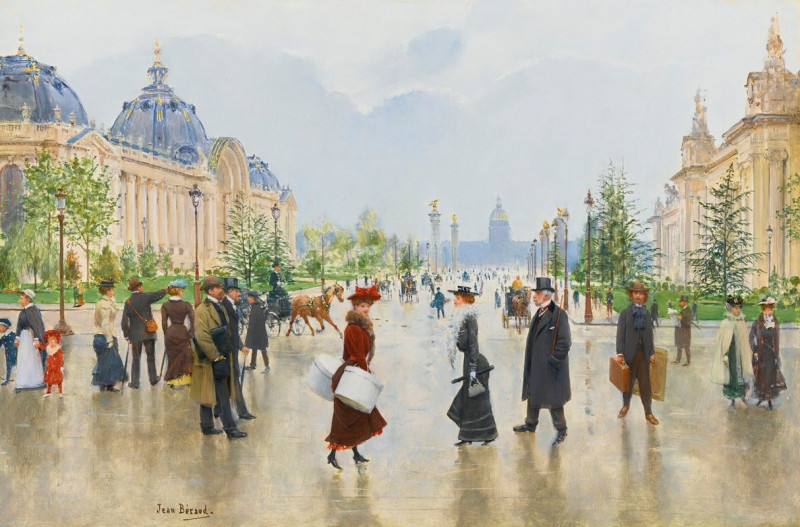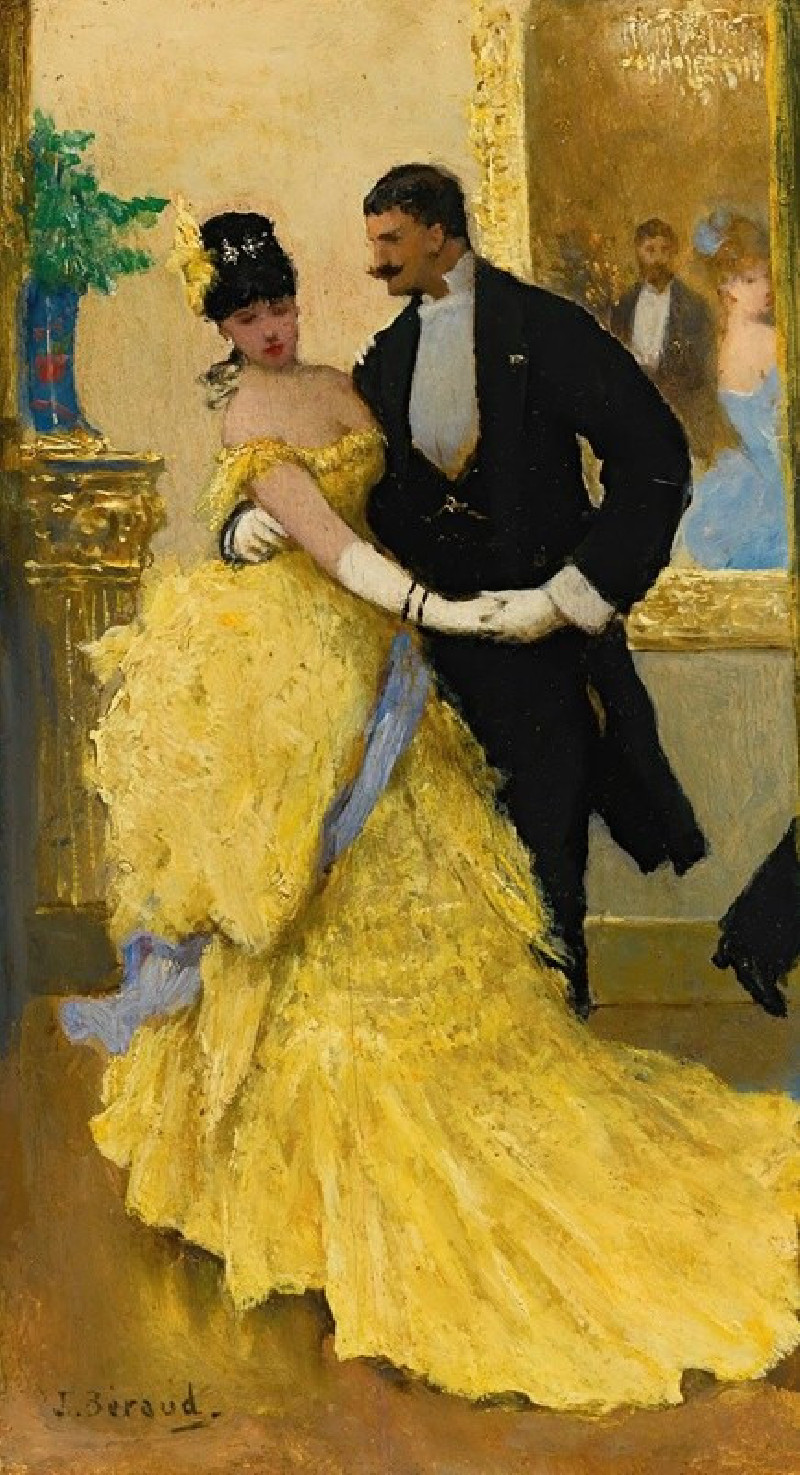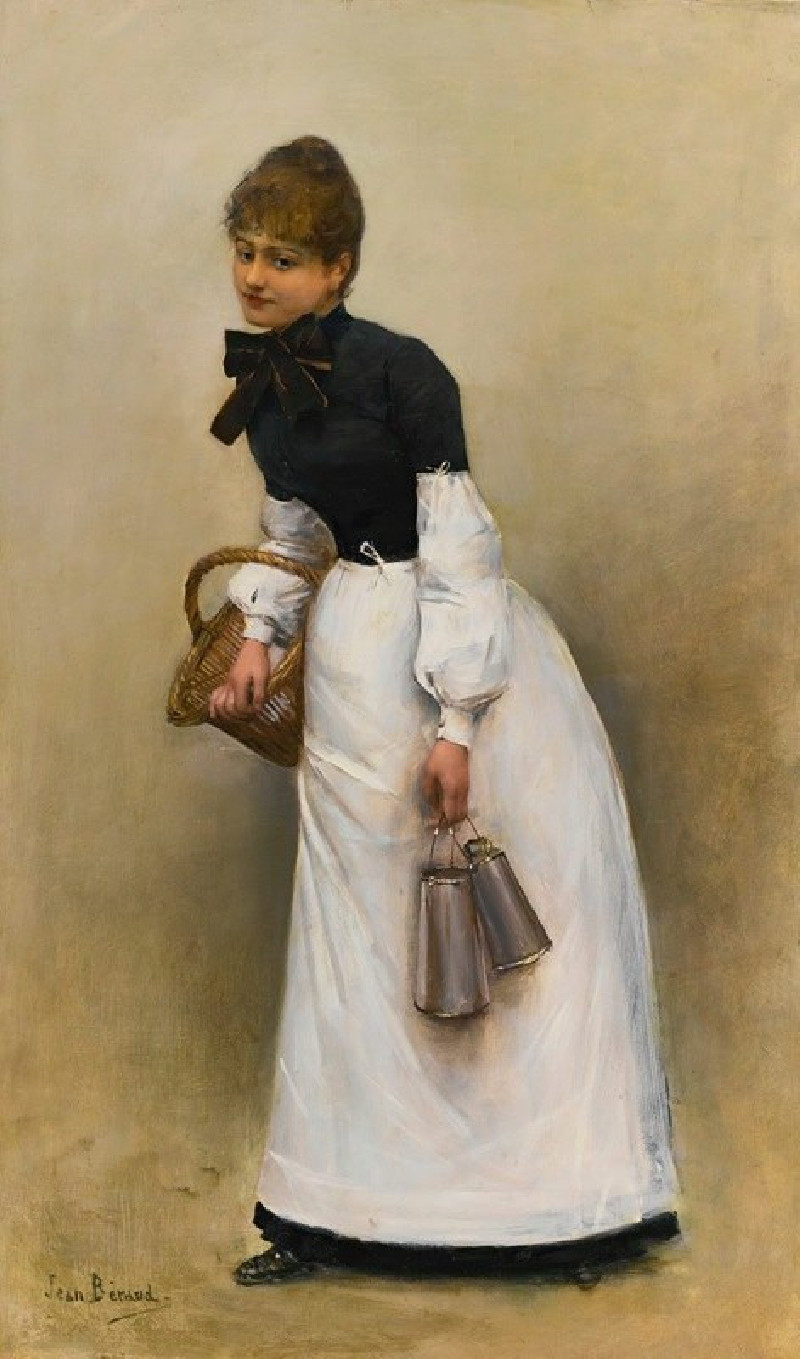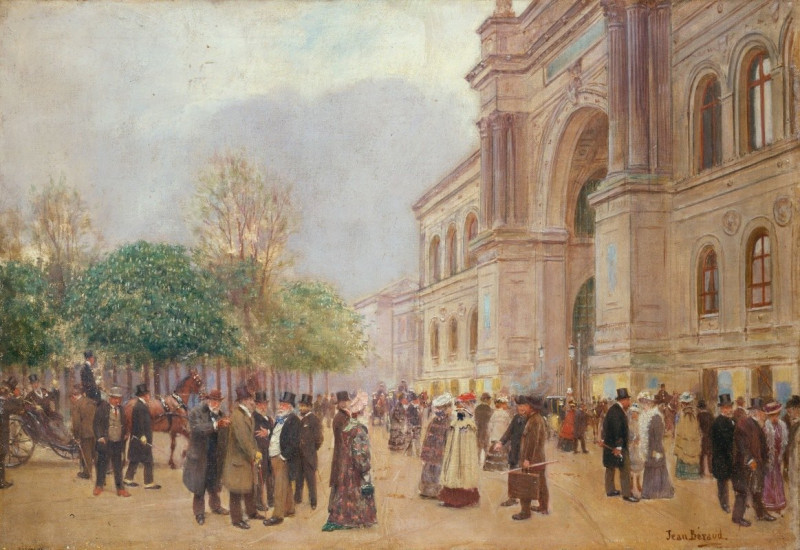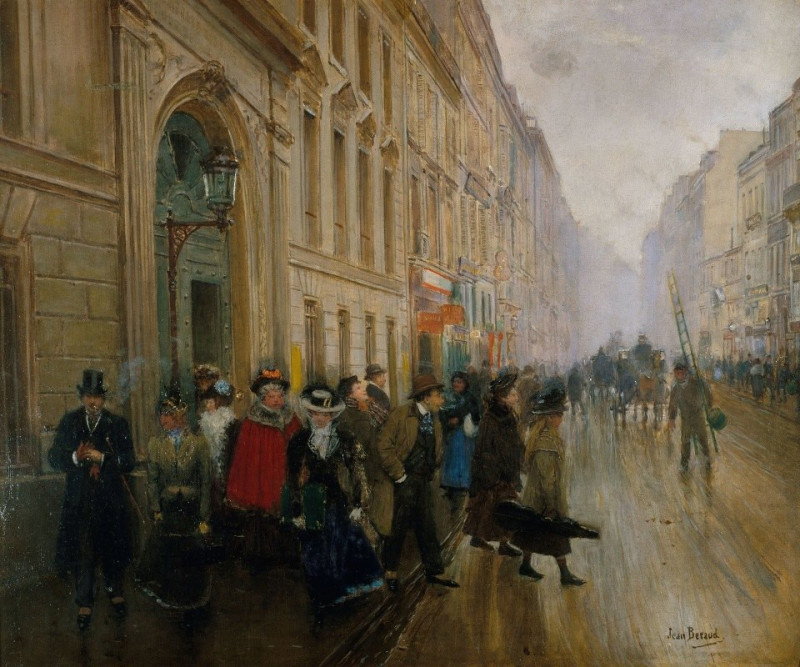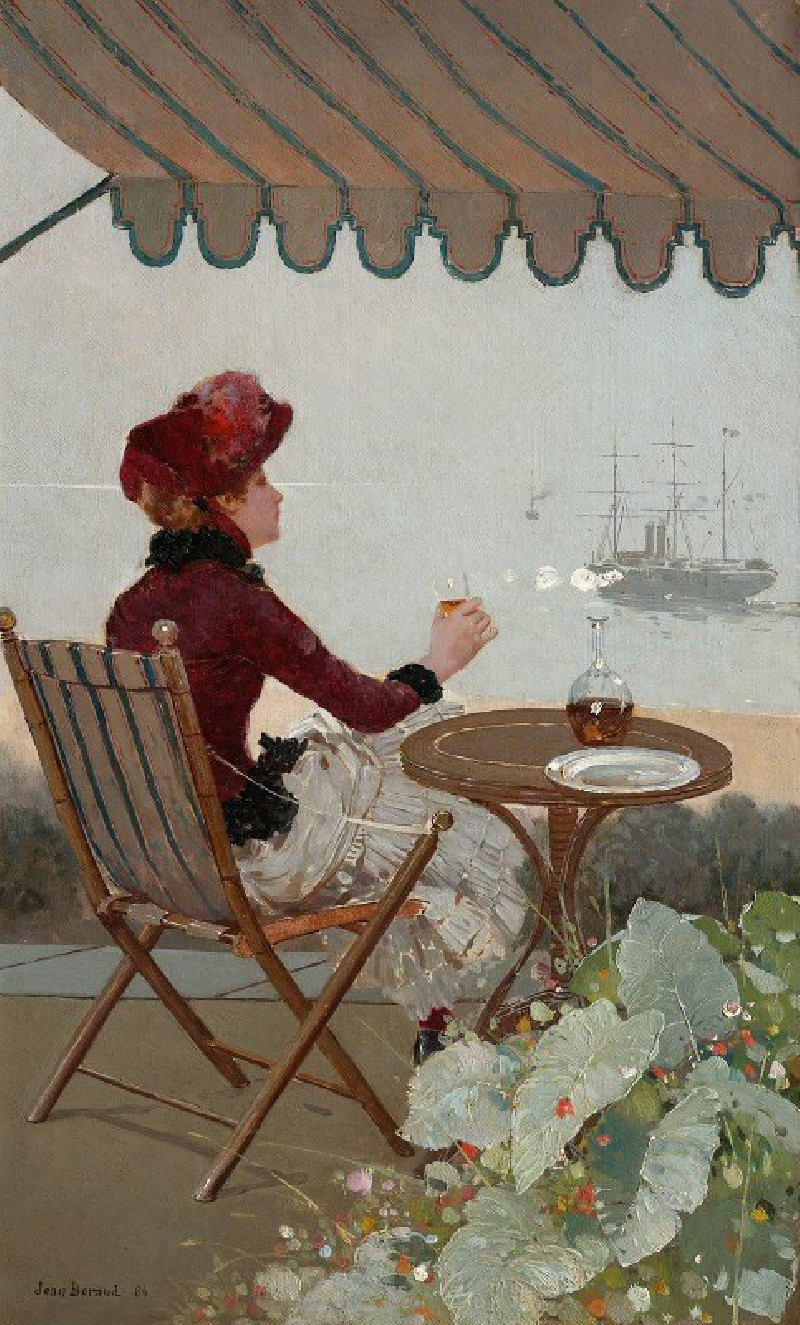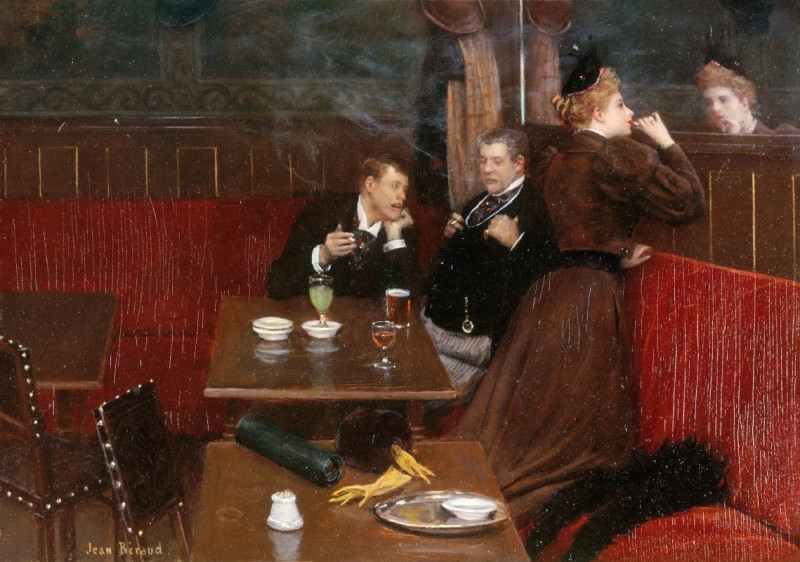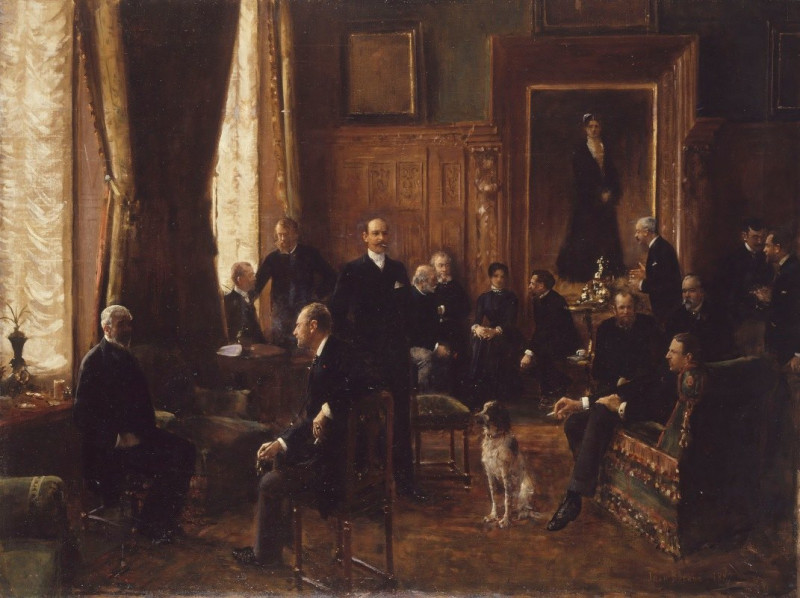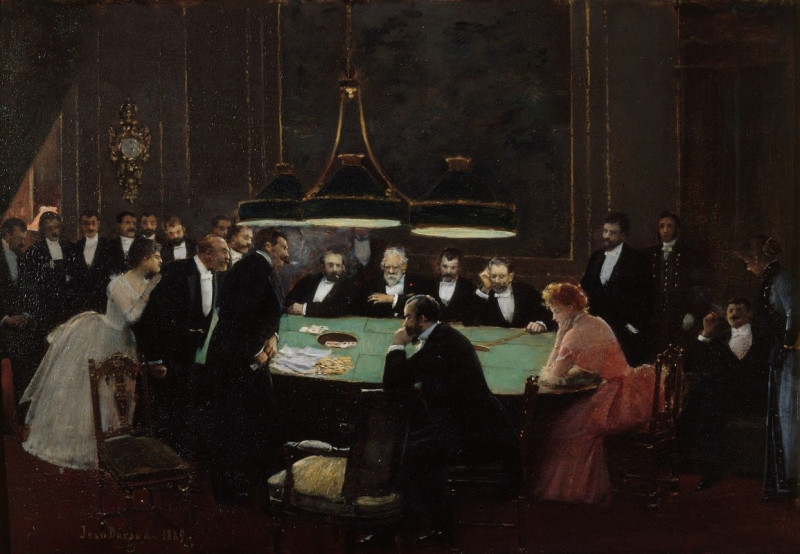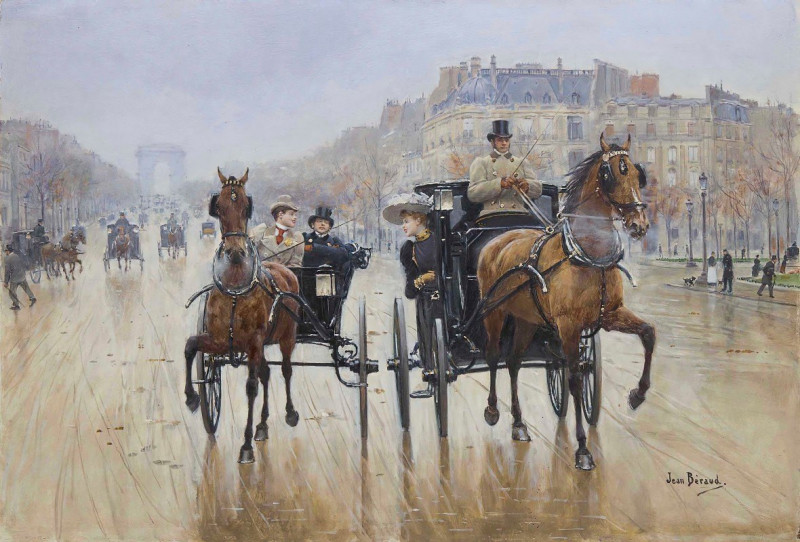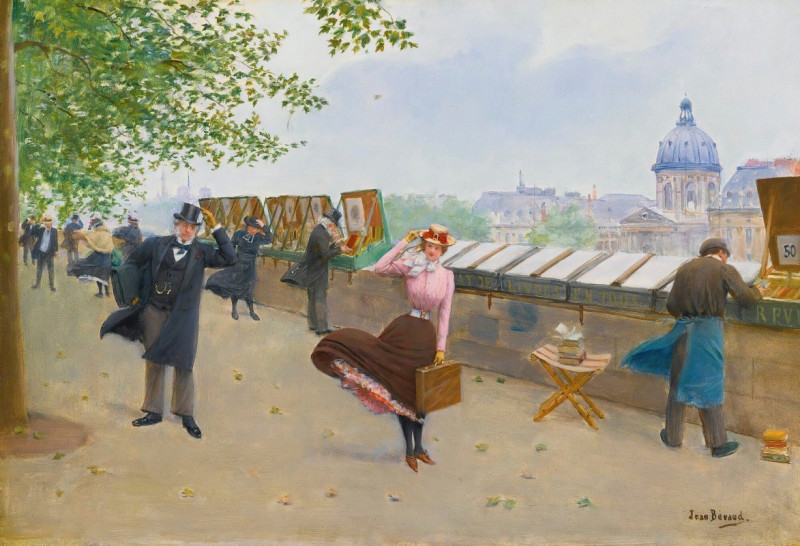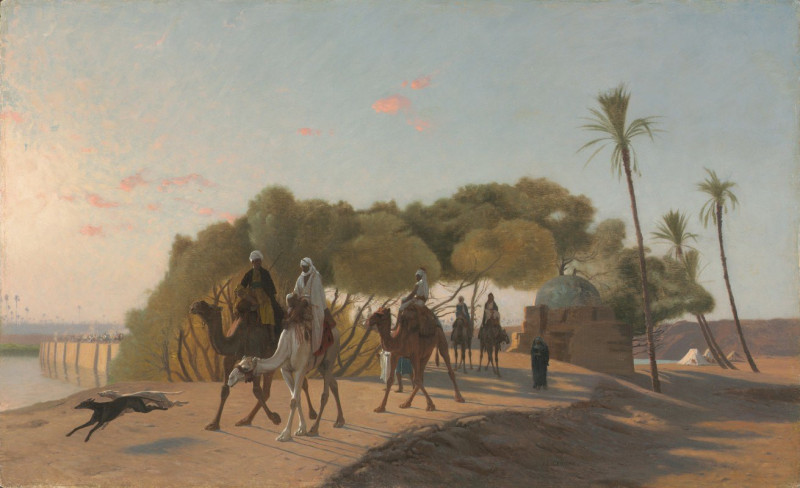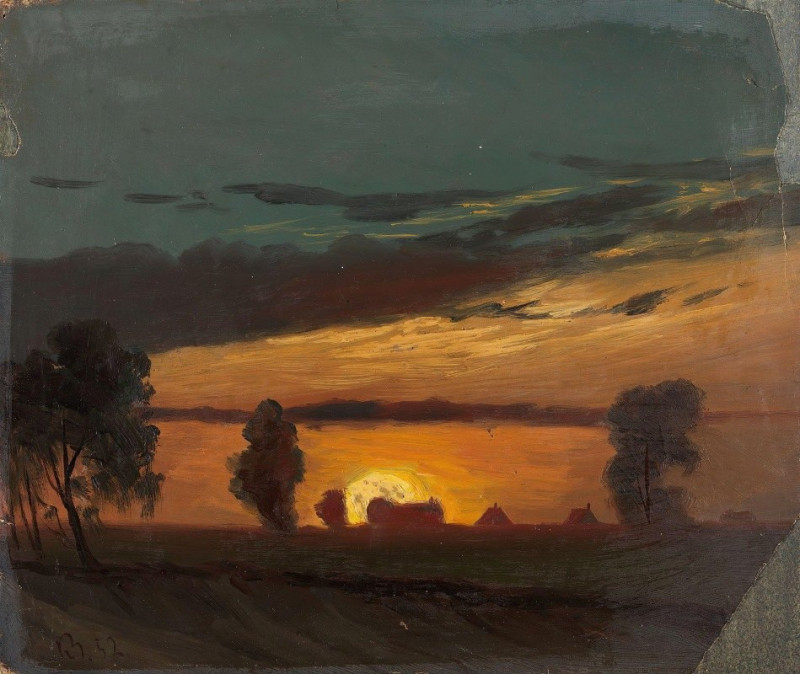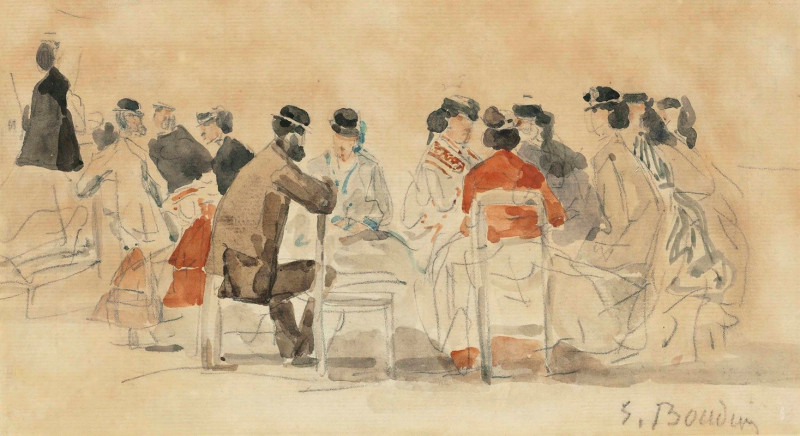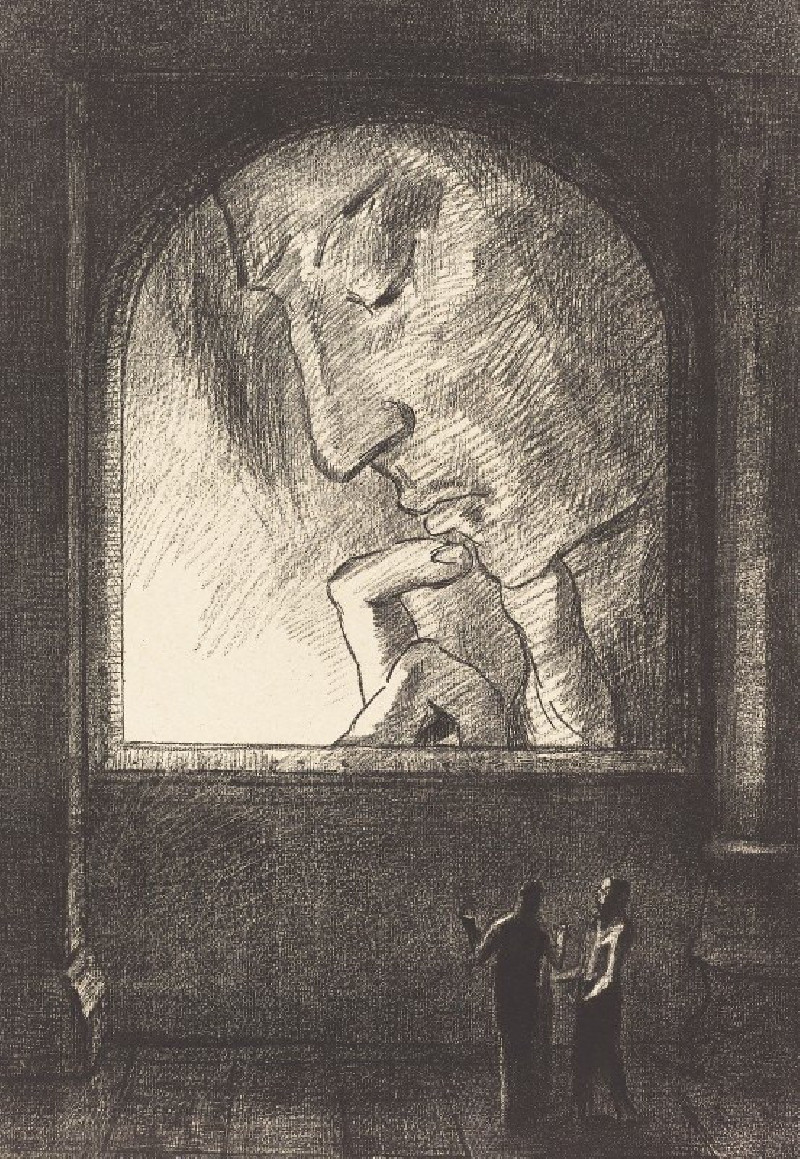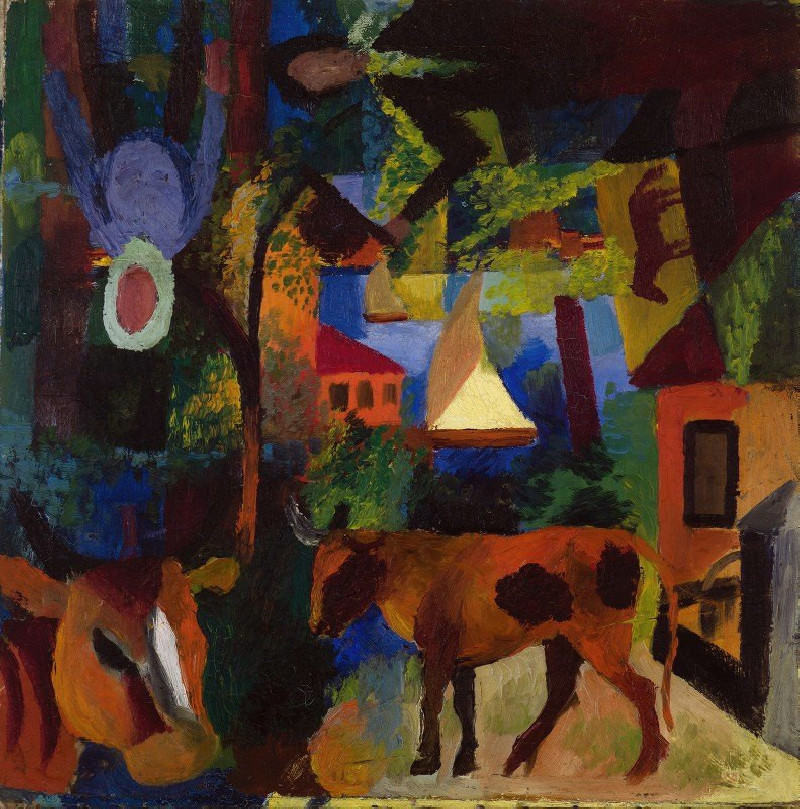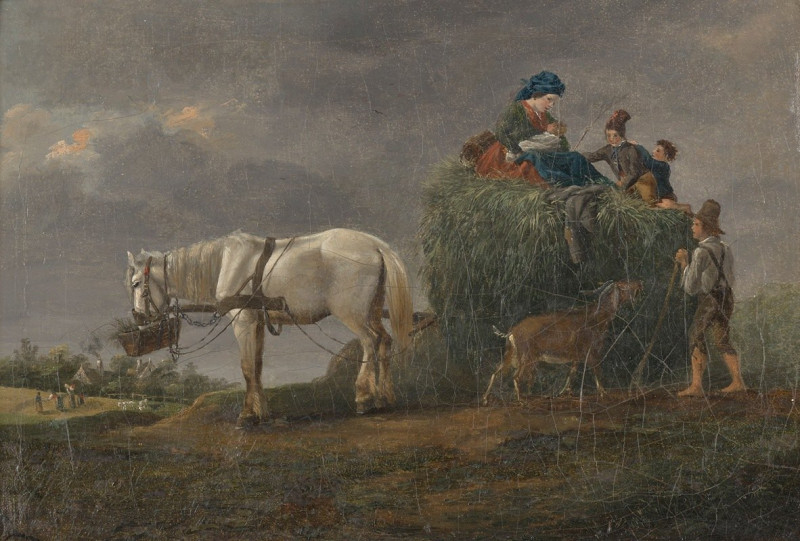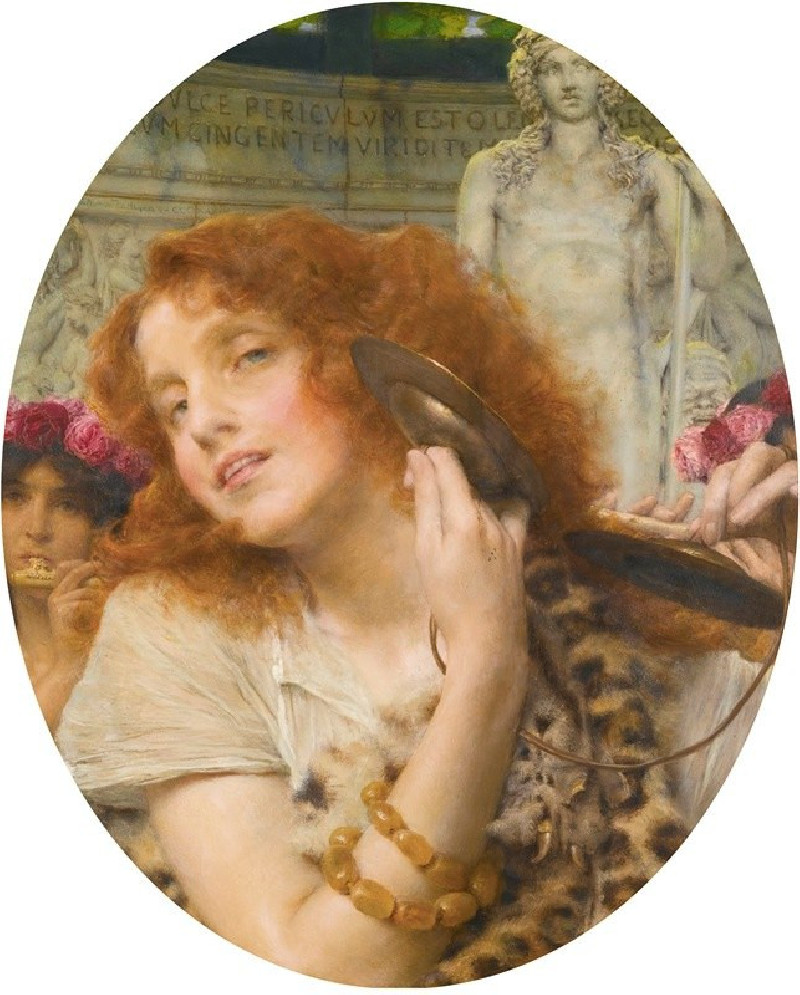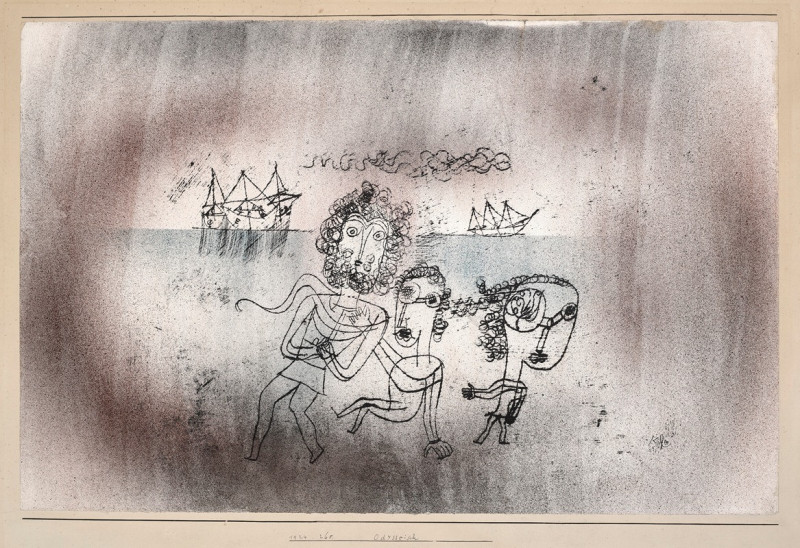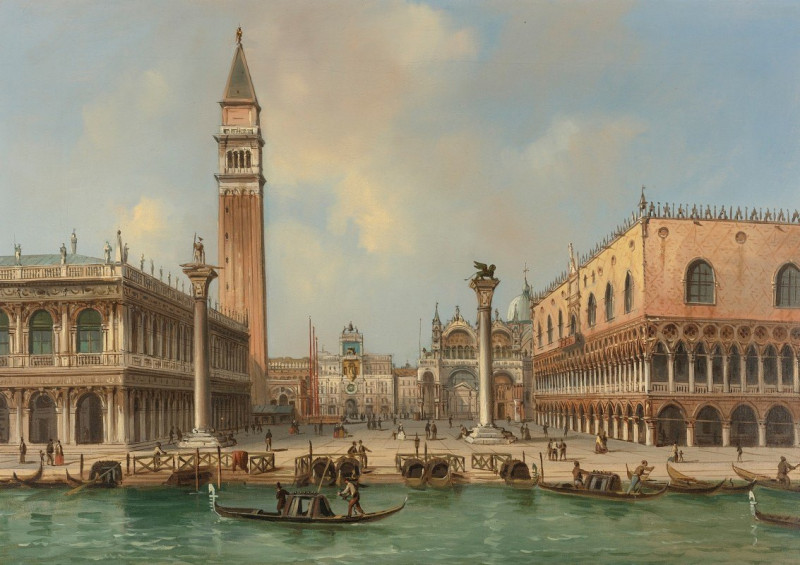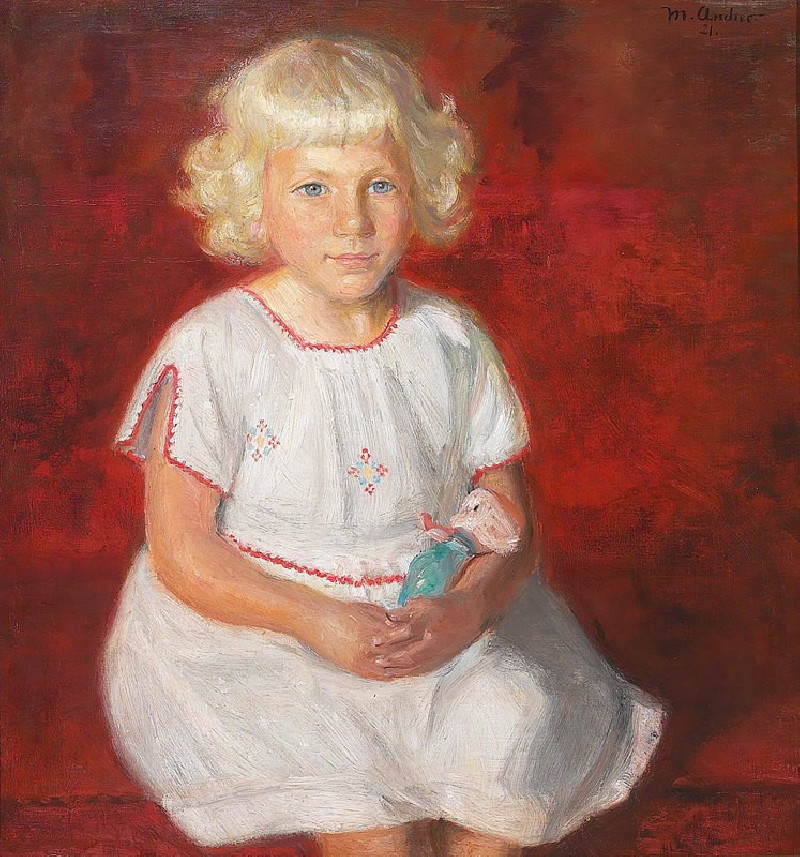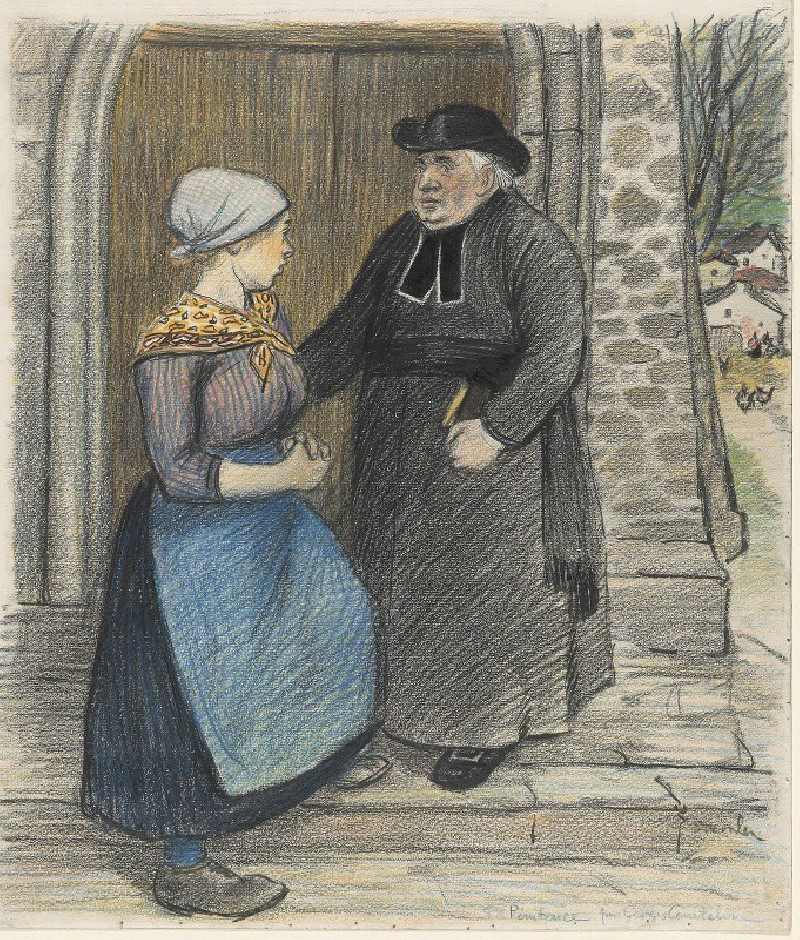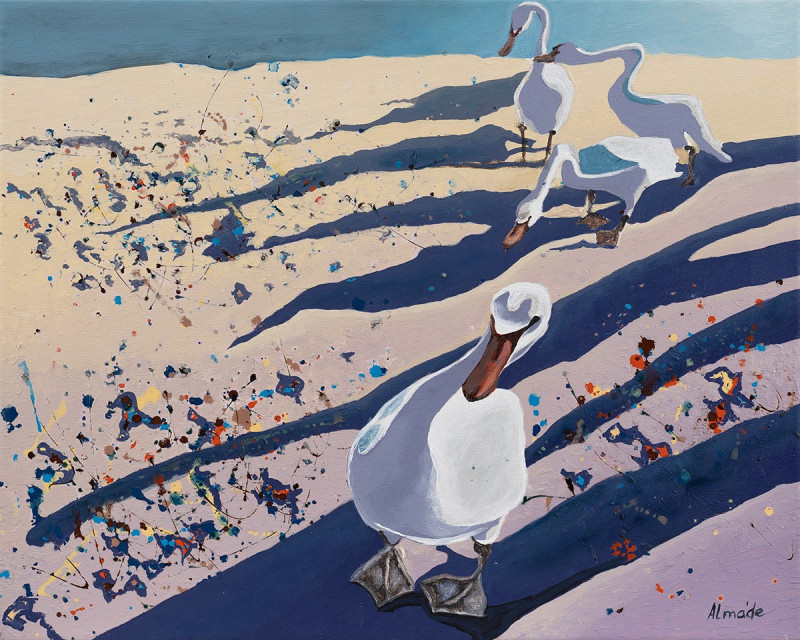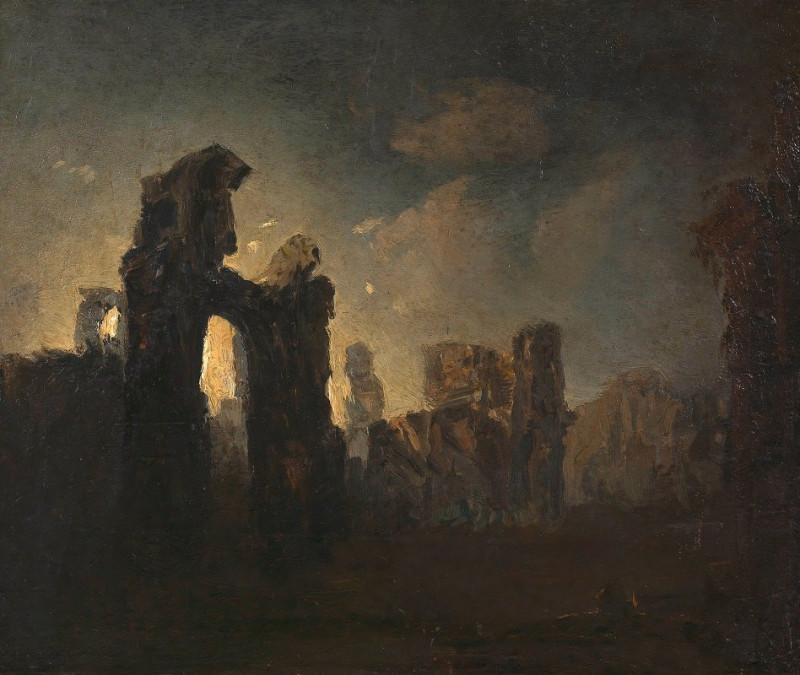La réception
Technique: Giclée quality print
Recommended by our customers
More about this artwork
Jean Béraud's "La réception" expertly captures a lively and opulent soirée set in a luxurious Parisian interior from the Belle Époque era. The richness of the scene is immediately apparent through Béraud's use of sumptuous colors and intricate details. The painting features a group of elegantly dressed individuals: the men in formal black suits with white ties, and the women in flowing gowns adorned with flowers and feathers.The setting of the painting is split into multiple areas, creating a narrative that courses throughout the room. On the left, a cluster of people, engaged in conversation, gathers near the grand doors topped with blue curtains that open to another chamber, hinting at the extension of the event beyond just the visible space. Central to the painting, a man and woman appear to be in the midst of an intimate exchange, suggesting the mingling and social dynamics typical of such gatherings.To the right, Béraud shows a group of men surrounding a fireplace, deeply involved in discussion. This side of the room is bathed in a warmer hue, emphasized by the glowing lamps and detailed with fine decorations and artworks, that give a feel of depth and texture to the scene.The mastery of light is particularly notable, with the reflected glow from the lamps illuminating faces and highlights in the room. The artist’s attention to reflecting details in mirrors, the gloss of the polished wood furniture, and the shimmering fabrics of the guests’ attire all contribute to a vivid sense of realism and immediacy.Jean Béraud, known for his genre paintings depicting Parisian life, showcases not only his technical skill in "La réception" but also his keen observation of social interactions and the atmospheric nuances of his time.
Delivery
Returns
Jean Béraud was a French painter renowned for his numerous paintings depicting the life of Paris, and the nightlife of Paris society. Pictures of the Champs Elysees, cafés, Montmartre and the banks of the Seine are precisely detailed illustrations of everyday Parisian life during the "Belle Époque". He also painted religious subjects in a contemporary setting.

